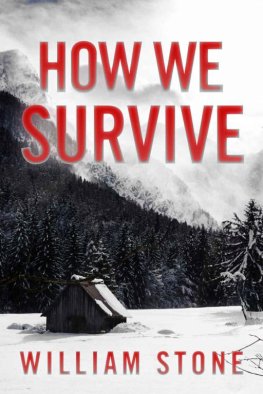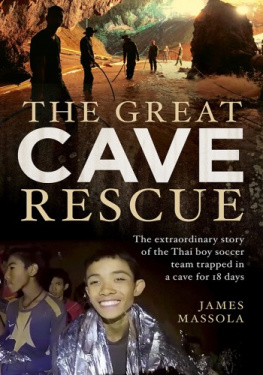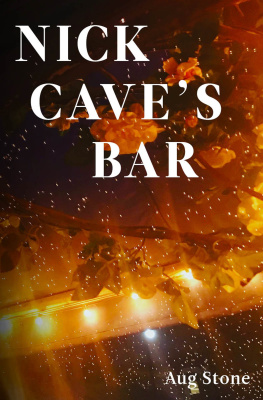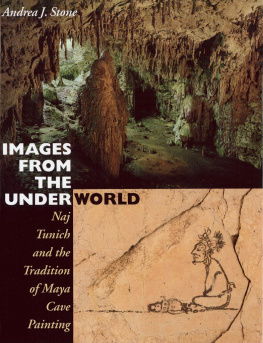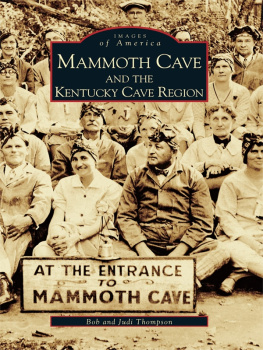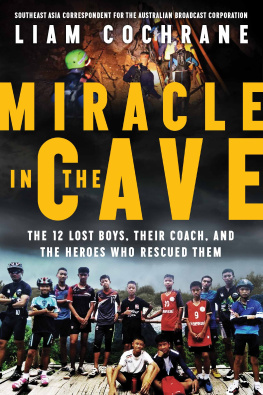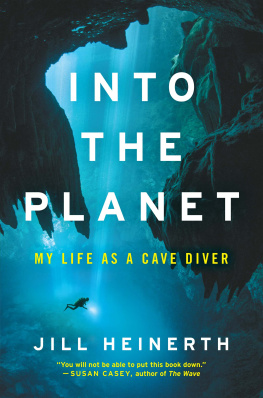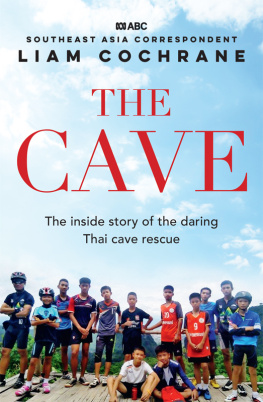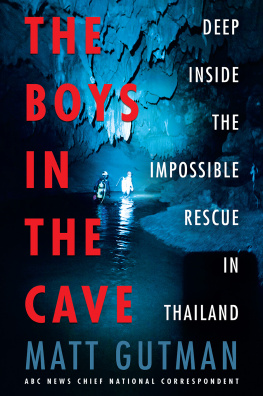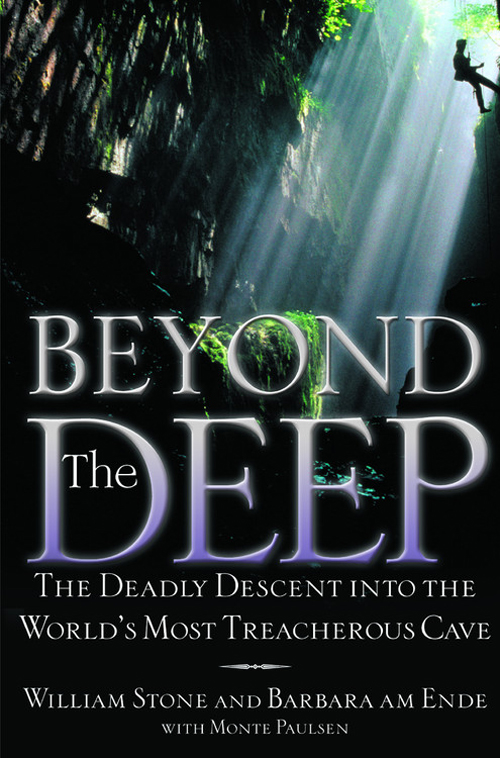Copyright 2002 by William C. Stone, Barbara Anne am Ende, and Monte Paulsen
All rights reserved.
Warner Books, Inc.
Hachette Book Group
237 Park Avenue
New York, NY 10017
Visit our website at www.HachetteBookGroup.com.
www.twitter.com/grandcentralpub
First eBook Edition: May 2010
ISBN: 978-0-446-56127-3
To Jim King and Roland Puton,
visionary patrons who saw this for what it was:
the exploration of the last terrestrial frontier.
To Rolf Adams and Ian Rolland,
who lived more in their brief time on earth
than most people ever will.
The authors are deeply grateful to the members of the 1994 San Agustn Expedition, many of whom candidly shared their recollections in extensive interviews some six years after the events portrayed in this book. Their extraordinary openness made possible the reconstruction of the far-flung events and complicated human interactions of this story. Also deeply appreciated are the dozens of support team members who helped haul more than a ton of equipment and supplies in and out of the cave, and the more than sixty corporate sponsors who generously provided most of that matriel; their names are listed in the appendices. And the authors remain thankful for the generous assistance of no fewer than nine jurisdictions within the government of Mexico, without which this and so many other important expeditions would not have been possible. Special thanks are extended to Sergio Zambrano and Angel Soto Porrua, both of Mexico City, who provided invaluable and dedicated assistance in planning the expedition; and to Nigel Jones and Mike Stevens of the Cis-Lunar development team, whose endless 2:00 A.M. de-bug sessions made the rebreather a reality. Thanks to Wes Skiles for his photographs and to Linda Heslop for her illustrations. Thanks to Michael Carlisle and Neal Bascomb of Carlisle & Company, and Rick Horgan of Warner Books, for their consistently valuable advice. And finally, the authors are uniquely indebted to the earlier Huautla explorersJim Smith, Bill Steele, Mark Minton, and many otherswhose work created a framework of exploration and mapping that paved the way for the 1994 expedition.
Bill Stone is grateful for the very early guidance of Ron Bergman of North Allegheny High School in Pittsburgh in learning the basics of cave exploration. He thanks his mother, Helen M. Stone, and father, Walter Curtis Stone, for their generous understanding, encouragement, and early financing of his involvement in this unusual pursuit. He is especially grateful to Sheck Exley, who taught him both how to survive underwater inside a cave and to understand the power of humility; and to Jim King, Roland Puton, and Bill Graves, who enabled him, over many expeditions, to think boldly in engineering design. And finally, Bill thanks the management of the National Institute of Standards and Technology, for their generous understanding that has allowed him to pursue the dual life of a scientist-engineer and explorer.
Barbara am Ende thanks her sister, Louise OConnor, and brother, Fabio (oops, thats Gerald am Ende), for their advice. She hopes her father doesnt have a heart attack when he reads this detailed account of the expedition, and apologizes for the worry this will cause. She posthumously thanks her mom for chauffeuring her to caving events before she was old enough to drive, and wishes she were still alive to see the publication of this book and so she could say, Mom, you were right! Finally, Barbara thanks the community of cavers who helped her experience the best of times, and provided a shoulder to cry on during the worst.
Monte Paulsen thanks all the caversthose who go on expeditions as well as those who just get muddy on the weekendswho generously shared both their skills and stories with the newcomer in their midst. Thanks also to Anna Mulrine for the mot juste, to Jason Vest for the happy wisdom buried in his grumpy counsel, and especially to Ron Williams and everyone at Dragonfly Media, without whose support this book would not have been completed. Monte extends his deepest appreciation to his family, who always accepted him, and to Sheila, who inspired his courage.
| Huautla Cave System: San Agustn Entrance to the San Agustn Sump (profile) | endpaper |
| The Village of San Agustn Zaragoza (top view and side view) | 60 |
| The 620 Depot (side view) | 86 |
| The Upper Gorge and the Metro (side view) | 90 |
| Camp Three: Sala Grande de la Sierra Mazateca (top view) | 102 |
| Lower Gorge (side view) | 107 |
| San Agustn Sump (top view and side view) | 127 |
| Sump Three to Sump Six (side view) | 261 |
| Ro Iglesia Falls (top view) | 285 |
| Huautla Cave System and Resurgence (side view) | 310 |
| Huautla Cave System: San Agustn Sump and Beyond (profile and plan) | endpaper |
Beyond the Deep is the true story of the 1994 expedition into the heart of Mexicos Huautla Plateau, as told from the perspective of Bill Stone and Barbara am Ende. This story is drawn from their logbooks, diaries, and recollections, as well as from dozens of interviews conducted by co-author Monte Paulsen.
To weave so many individual stories into a cohesive narrative, we were forced to omit many great anecdotes, and to move others to dates or locations that vary from the times or places at which they actually occurred. Throughout the chapters in which we introduce the cave itself, for example, we deemed it less confusing to slightly alter the timeline than to leapfrog about the labyrinth. No incidents have been made up, however, and the major events of this story have been retold as accurately as possible.
Likewise, it was necessary to reconstruct dialogue. Putting words in another persons mouth is always fraught with danger; even more so seven years after the fact. We asked each of the core team members about dialogue, and used much of what they could recall. When crafting a speech, we sometimes drew words or phrases from later comments by the same speaker. This was the case with all of the Mazatec characters in the story, who kindly shared their recollections with us in Spanish.
Memory is inherently subjective. In most cases, when we discovered that team members disagreed in their recollection of events, we crafted a workable compromise. In a few instances, we simply told the incident from Bills or Barbaras perspective.
We substituted common words for technical jargon wherever possibletheres also a glossary at the back of the bookand we tidied up a few salty phrases along the way. We were less successful in cleaning up the expeditions mishmash of English, metric, and other measurements. As scientists, Bill and Barbara prefer the precision of the metric system; unfortunately, most American and British divers dont talk that way. We compromised by providing the critical cave measurements in meters, and most day-to-day observations in the English units that are more familiar to American readers.
There are two increasingly common writers tricks we did not employ anywhere in this book: We didnt add fictional events. And we didnt create fictional or composite characters. Everything in this book actually happened during the 1994 expedition (except for clearly noted historical references), and everyone whose name appears in this book is a real person.
The people whose stories fill this book are an amazing lot. For no reward other than the joy of discovery, they submit to incredible hardships and put their lives in one anothers hands on a daily basis. Theyve earned our respect, and we trust theyll win yours.


